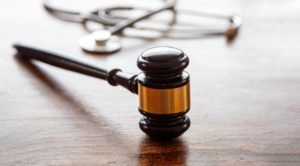The Diocese of Gallup of New Mexico released a list this past week of 31 priests credibly accused of abusing minors. In looking at the list, you wonder when did they know about each of these individuals? The names date back to 1950. Some are dead, but at least one was working as a priest in Arizona as recently as last year.
Fr. Timothy Conlon
Assignments:
St. John the Baptist Parish, St. Johns AZ (11/2011 – 12/2013)
San Rafael Parish, Concho AZ (11/2011 – 12/2013)
A review of the list also shows how these Priests were moved around. Since the Diocese of Gallup covered parishes in both New Mexico and Arizona, and much of it made up of native American lands, there were many places for each to be sent. As their website says:
The Roman Catholic Diocese of Gallup is a multicultural, expansive diocese, comprising 55,000 square miles in Northeastern Arizona and Northwestern New Mexico. The landscape, people, and faith expression within this area are extraordinary and unlike any other diocese in the United States and, perhaps, the world. There are 53 parishes, 13 schools, and 5 social centers within the diocesan boundaries—all serving approximately 58,000 Catholics among a total population of 490,000.
How many times were these individuals transferred after information was disclosed about their actions? As a 2011 Gallup Independent article pointed out:
But for Catholics who regularly attended Mass in a parish in Northern Arizona during the 1950s, ’60s, ’70s or ’80s, they probably had at least one parish priest who was a sex abuser, and they probably attended church with a number of abuse victims. And for Hispanics from devout Catholic families in Northern Arizona, they probably have at least one relative who was an abuse victim.
Many of Gallup’s abusive priests were sent to far-flung Arizona communities that were hundreds of miles from the eyes and ears of the Gallup chancery. In addition to its parishes in Apache and Navajo Counties, the Gallup Diocese once included many Arizona communities in Coconino, Mohave and Yavapai counties, such as Flagstaff, Kingman, Prescott and Camp Verde.
Keep in mind this article was written in 2011, three years before the recent disclosure and contained the names that are now being disclosed. It is so important that the files of these individuals be disclosed so that transfer questions can be answered. However, the reality is that it is clear that they have hidden information for many years. The best solution is to demand full disclosure to insure that the hiding stops and full disclosure with zero tolerance is the future.
At the time of the list disclosure, SNAP (Survivor Network of Those Abused by Priests) made a number of very good recommendations:
— reveal the predator priests’ photos, current whereabouts and detailed work histories
— put all this information in every parish bulletin, along with an emphatic plea for anyone who saw, suspected or suffered clergy sex crimes or cover ups in Arizona or New Mexico to call police.
— personally visit the parishes where these priests worked (starting with the predator who faces the most recent allegations) and beg victims, witnesses and whistleblowers to contact law enforcement.
— write – and publicly disclose – letters to their brother bishops in whose dioceses some of these potentially dangerous men now live or work.
— post their own lists of proven, admitted and credibly accused child molesting clerics on their own diocesan websites.
As they go on to point out:
If an Arizona manufacturer knew of dozens of potentially dangerous sites where its toxic waste was hidden, but kept most of this information concealed for decades, there would justifiably be a huge public outcry. And if, belatedly and grudgingly, the CEO had finally disclosed those sites, there would justifiably be pressure for him or her to do more.
It is all a question of public safety. The Church’s past actions have not kept children safe.
Abuse of children and the continued silence by the offenders needs to be prevented. If you suffered, saw, or suspected such events, it is important to know that there is help out there.

A founding partner with Bradshaw & Bryant, Mike Bryant has always fought to find justice for his clients—knowing that legal troubles, both personal injury and criminal, can be devastating for a family. Voted a Top 40 Personal Injury "Super Lawyer" multiple years, Mr. Bryant has also been voted one of the Top 100 Minnesota "Super Lawyers" four times.










Comments for this article are closed.